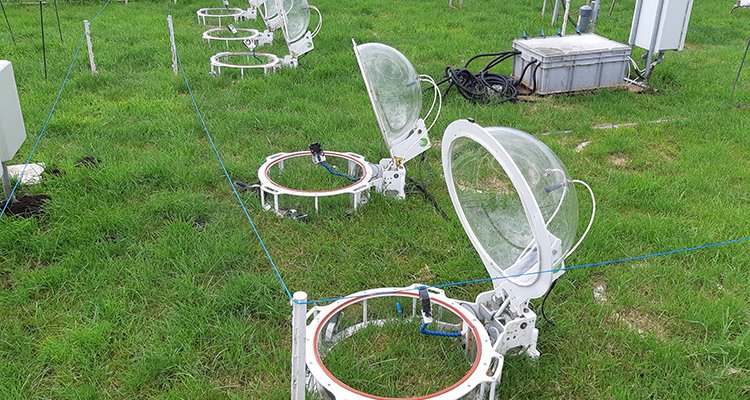
Peat as a source of greenhouse gases
During the reclamation of peatland the groundwater table is lowered. This causes the peat to settle, shrink and oxidize. As a result, the soil subsides. The largest land subsidence occurred in the 20th century due to efficient drainage, which was required to make peatlands suitable for agriculture and peat excavation. Peat soils are also threatened by wildfire.
During the decomposition and oxidation of peat, greenhouse gases are released (carbon dioxide (CO2), methane (CH4) and nitrous oxide (N2O)). Although water authorities in some regions are trying to prevent further lowering of the groundwater table, the processes of decomposition and land subsidence continue. The greenhouse gases contribute to the warming of the atmosphere. The land subsidence increases the risk of flooding and can cause damage to constructions, roads, cables and pipes. Water management becomes increasingly complex and expensive.
In order to reduce the emission of greenhouses gases and land subsidence in peatlands, we want to find out how these processes work. Wageningen University & Research examines these in field experiments and modelling studies.
Projects
Publications
-
Quantifying peatland land use and CO2 emissions in Irish raised bogs : mapping insights using Sentinel-2 data and Google Earth Engine
-
Regional variability in peatland burning at mid-to high-latitudes during the Holocene
-
Process-based modelling of CO2 fluxes in Vlist
-
Upscaling methane fluxes from peatlands across a drainage gradient in Ireland using PlanetScope imagery and machine learning tools
-
Peatland-VU-NUCOM (PVN 1.0) : Using dynamic plant functional types to model peatland vegetation, CH4, and CO2 emissions
-
Evaluating GHG emissions and profitability of innovative grassland-based farming systems on a Dutch peat meadow
-
Turning peat soil benefits climate
-
Evaluation of 50 years subsidence monitoring of a peat meadow parcel to compare several methods to determine CO2 -emissions
-
Tradeoff of CO2 and CH4 emissions from global peatlands under water-table drawdown
-
Diminishing soil subsidence and CO2-emission of peat soil by subsurface irrigation